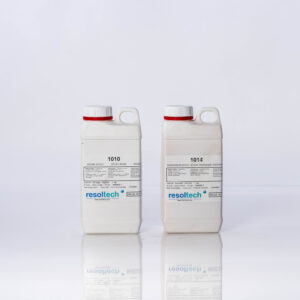Google score of 4.8
(24 reviews)
Free delivery in Benelux from €39 purchase excl.
€ 154,88 – € 363,00
Country | < 2kg | 2.01 – 10 kg | 10.01 – 30 kg | 30.01 – 40 kg | 40.01 – 72 kg |
|---|---|---|---|---|---|
Belgium, Netherlands, Luxembourg
| Free | Free | 4.8€ vat excl. | 9.8€ vat excl. | 14.8€ vat excl. |
France, Germany
| 4.8€ vat excl. | 9.8€ vat excl. | 14.8€ vat excl. | 19.8€ vat excl. | 39.6€ vat excl. |
Italy, Spain, Portugal, Austria, Denmark, Finland, Sweden | 12.8€ vat excl. | 14.8€ vat excl. | 19.8€ vat excl. | 24.8€ vat excl. | 44.8€ vat excl. |
Norway, Switzerland | 17.8€ vat excl. | 19.8€ vat excl. | 24.8€ vat excl. | 28.8€ vat excl. | 54.8€ vat excl. |
At Finres, we understand the importance of receiving your orders quickly and with complete peace of mind. That’s why we’re committed to shipping your items within 2 working days of your order. Delivery will then take 1 to 3 working days, depending on destination.
We’ve partnered with UPS, the world’s leading logistics company, to offer you fast, high-quality delivery.
We ship to many European countries, including Benelux, France, Germany, Italy, Portugal, Spain, Austria, Denmark, Finland, Sweden, Norway and Switzerland. So whether you’re in Paris, Berlin, Rome or Stockholm, we’re here to serve you. If you are located in another geographical area, please contact us to discuss delivery options.
Once your order has been dispatched, you will receive a tracking link by e-mail, enabling you to follow the progress of your delivery in real time. So you can have peace of mind knowing exactly where your parcel is and when it will be delivered.
Our commitment to customer satisfaction is reflected in every step of the delivery process. We’re here to make your online shopping experience worry-free, from start to finish.
Thank you for trusting us with all your delivery needs. We look forward to serving you!
Resimac 202 Ceramic Repair Fluid is an erosion- and corrosion-resistant product for high-abrasion environments.
The product contains hardened ceramic fillers and is ideal for protecting metal surfaces in
aggressive environments.
– Apply to abrasive-blasted surfaces
– Apply Metal Repair Paste 101 or Ceramic Repair Paste 201 to repaired surfaces.
– Ideal for protecting metal surfaces in environments with aggressive fluids.
Metal substrates – Abrasive blasting
1. All oil and grease must be removed from the surface using a suitable cleaner such as MEK.
2. All surfaces must be blast cleaned to ISO 8501/4 SA2.5 (SSPC SP10/ NACE 2) with a minimum profile of 75 microns (3mil) using an angular abrasive. of 75 microns (3mil) using an angular abrasive.
3. Once stripped, the surface must be degreased and cleaned with MEK or a similar product.
4. All surfaces must be coated before corrosion or oxidation occurs.
NOTE: for salt-contaminated surfaces, the substrate must be pressure-washed with clean water and checked for salt contamination.
Please refer to the surface preparation and pre-application guide for further information.
Before mixing, please check the following points:
1. The base component is at a temperature of 15-25°C (60-77F°).
2. Ambient and surface temperature above 10°C (50F°).
Once these 2 checks have been carried out, mix the product.
To mix the complete unit (1kg/3kg), please follow the instructions below:
1. Pour the contents of the Activator unit into the Base container.
2. Ensure that as much material as possible is drained from the activator container into the base container.
3. Mix the 2 components using the spatula provided.
4. Make sure the product is streak-free and uniform in color before applying it to the surface to be repaired.
Once mixing has begun, the material must be used within 25 minutes at 20°C (68F°).
1. Use a short-bristled brush to apply the mixed material, with a bristle length of approx. 2 cm.
2. Apply the coating at a wet film thickness of 250-350 microns (10-14mil).
3. Particular attention should be paid to detailed areas such as edges, corners and welds, where a brush application per
brush application may be necessary.
4. Allow the 1st layer of material to harden for approx. 2 hours at 20°C (68°F).
5. Once the 1st coat has hardened sufficiently, apply a 2nd coat of material to a target thickness of
250-350 microns (10-14mil).
At 20°C (68F°), applied materials must be allowed to harden for the times indicated below before being subjected to the conditions indicated.
conditions indicated. These times will be extended at lower temperatures and reduced at higher temperatures:
Operating time 25mins
Minimum recoat time 2 hours
Maximum recoat time 6 hours
Full cure 2 days
Minimum – the applied material can be covered as soon as it is dry to the touch, i.e. approx. 2 hours at 20°C (68°F).
Maximum – covering time must not exceed 6 hours.
Once the maximum recoat time has been exceeded, allow the material to harden before abrading or sandblasting to remove surface contamination.
Mixed material – Dark grey, Light grey, Red, Blue
Basic component – Dark grey, Light grey, Red, Blue
Activator component – Amber liquid
5 years if unopened and stored under normal dry conditions (15-30°C/ 60-86°F).





RUE J. VAN HOVE, 35 1950 KRAAINEM
Mo-Fr 8:30 - 12:00 / 13:00 - 17:00
